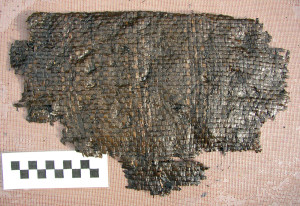by Dale R. Croes and Kathleen Hawes
The Journal of Northwest Anthropology recently published an article on wet site basketry plant ID and the major wood and fiber artifact categories often found in wet sites along the Northwest Coast of North America (Fall 2013, Vol. 47, No. 2, pp. 117-152). See entire report at: Exploring Ancient Wood and Fiber along the Northwest Coast of North America

Abstract: Well preserved waterlogged/Wet archaeological site explorations have revealed a focused use of wood and fiber artifact technologies for at least 10,500 years along the Northwest Coast of North America. Major artifact categories include those for subsistence (e.g., wooden shank fishhooks, nets), manufacture (e.g., wooden wedges, wood chip debitage and basketry element debitage), containers (e.g., basketry and wooden boxes/bowls), and tying elements (e.g., cordage and binding elements). The kinds of plants selected for artifacts from different sites are explored. Often technologies and styles used reflect long term cultural continuities in different regions—with focus here on exploring wet sites in the recently renamed and shared Salish Sea of B.C., Canada and Washington State, U.S.A. And finally we need to point out the advocates of paleo-ethnobotany research—involving both archaeologists and Native communities.
Leave a Reply